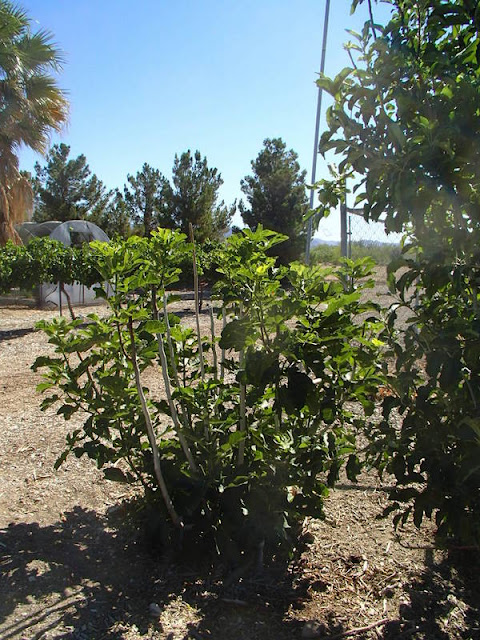Q. I bought an Anacacho Orchid Tree at the Springs
Preserve plant sale. Everyone tells me it needs rapidly drained soil, so I will
use cactus soil. Should I put a couple inches of compost on top to enrich it?
A. Interesting plant you bought. Not used much in the Las
Vegas area because it’s not available but more popular in Arizona and
Texas. Native to the Chihuahuan Desert. It’s a good choice for a desert
landscape here.I don't have a picture of one but you can look at it if you click on the post below.
It’s a
small tree, roundish up to about 12 feet but can get 20 feet tall if well-managed
and planted in rich, moist soils.
Drainage
is correct. The soil must have good drainage so with no drainage problems in
your soils it should be fine. Avoid layering soil. This impedes drainage. A
cactus soil is not necessary but amended soil throughout the planting hole will
provide enough good drainage.
Mix
maybe 20% compost with the soil used for backfilling around the roots or use a
ready-made soil mix. It is native to the Chihuahuan Desert which has more
organics in the soil than soils in the Mojave Desert. Compost amendments improve
drainage through the soil. Rich compost provides fertilizer. With a rich
compost, no need to fertilize for about two years.
Make
sure the soil at the bottom of the planting hole drains water. That’s important.
The hole should drain water overnight or sooner after filling it. If not, plant
it on a mound.
Avoid extremely
hot locations in the landscape such as South facing exposures near hot,
radiating walls. The southern exposure is okay but don’t put it close to a hot
wall. This plant grows in desert canyons in the wild. What does that tell you?
Deep watering, open spaces surrounded by desert soils and rock and possible
protection from late afternoon sun.
Most
cold winters it should be deciduous in Las Vegas unlike places with warmer
winters. Not terribly pretty during the winter months but it should give you
good floral displays if pruned during the winter and not during the months.












